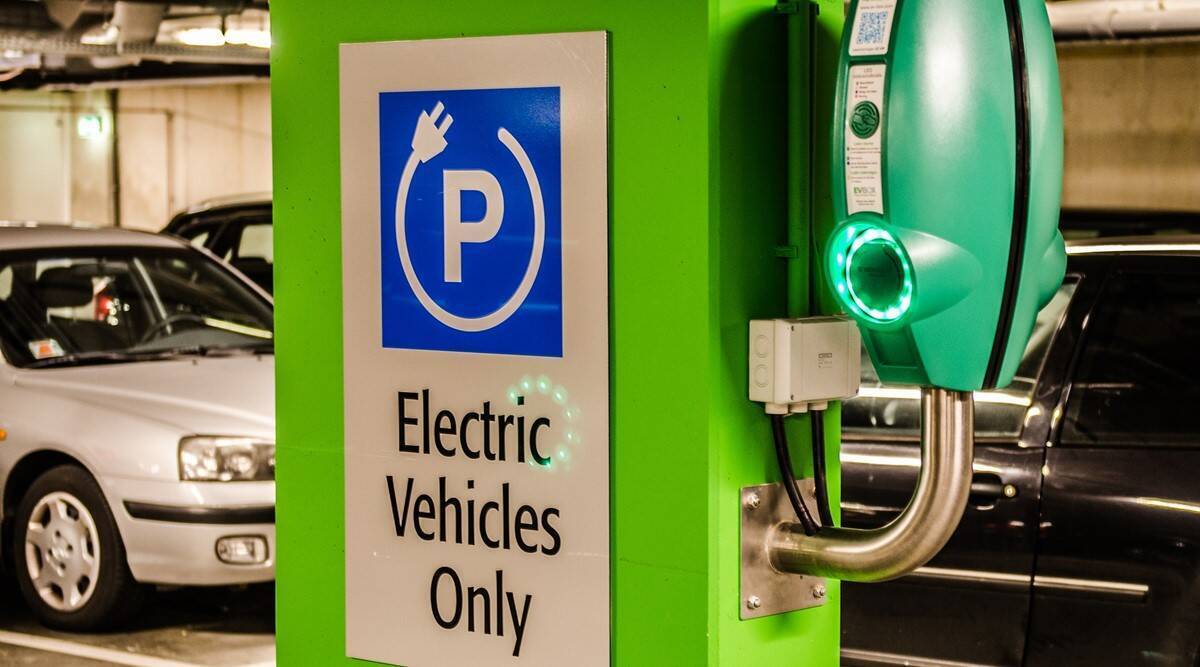|

For first lot of 40 buses, an agreement was signed by the UT administration with M/s Ashok Leyland for 10 years. (Representational- Image credit: pixabay)
As many as 50 lakh passengers have travelled on electric buses that were introduced in Chandigarh last year, thereby leading to 4.28 lakh litres of diesel being saved, data obtained by The Indian Express from Chandigarh transport department showed.
On a daily basis, approximately 15,500 passengers in Chandigarh travel in the mini electric buses that were flagged off in September last year.
Data obtained by The Indian Express showed that 45 electric buses were at present plying on the roads of Chandigarh — five of which were purchased from Eicher and introduced late last month, with the remaining fleet of 40 belonging to Ashok Leyland that was flagged off last year. These buses, since their introduction, have quickly become the preferred choice of commute for passengers.
The transport department has plans to replace all diesel buses in the Tricity with electric ones by 2027-2028.
The data specified that these buses together have logged around 21.50 lakh kilometres and have saved 4.28 lakh litres of diesel till date.
The data obtained also specified that the average of electric buses was Rs 28-30 per kilometre, while the same for 9 metre diesel buses were Rs 38-40 per kilometre. Chandigarh has a total of 597 Chandigarh buses. Of these, a total of 403 buses operate on Tricity routes. Forty five of the 403 buses on the Tricity routes were e-buses.
The data further showed that diesel buses of Chandigarh saw a daily average passenger ridership of 95,000 in the last year, while the electric buses saw an average of 15,500 passengers riding them daily in Chandigarh.
Chandigarh’s director of transport department, Pradyuman Singh, while speaking to The Indian Express on Tuesday, said that the city was waiting for its next lot of 40 buses that are likely to start operating from next month onward. “The buses will start coming by the end of this month, but will only start plying on city roads from next month onward. Once the buses arrive in the city, we need to get them registered and take care of other formalities and they will be ready by next month,” he said.
The 40 Ashok Leyland electric buses that were flagged off in September last year are equipped with a ton of features like air conditioning and individual air vents. Each bus has a capacity to seat 35 passengers and carry 20 more standing passengers. The buses have passenger information screens at the front, rear, side and inside the saloon area. They also have pneumatically controlled passenger doors, as well as panic buttons for emergencies and mobile charging points for each row of seat and air suspension at the rear.
The department of Heavy Industries, under the Union Ministry of Heavy Industries and Public Enterprises, had sanctioned 80 electric buses under Phase-ll FAME India scheme.
Charging infra at four locations
For first lot of 40 buses, an agreement was signed by the UT administration with M/s Ashok Leyland for 10 years. The agreement included procurement of buses, installation of adequate number of chargers for charging by Ashok Leyland along with LT charging infra up to transformer, maintenance of buses, providing a driver for 10 years. The fare for the buses is collected by the authority.
The Ashok Leyland electric buses come with fast charging technology, with the company responsible for operating and maintaining the fleet end-to-end. Infrastructure for charging these buses have been developed at four locations (Depot-3, ISBT-17, ISBT-43 and at PGI) in the Tricity.
These charging stations are looked after by Ashok Leyland’s electric vehicle arm, Switch Mobility, in partnership with Siemens by leveraging its global eMobility technology. In April 2021, Siemens and Switch Mobility had signed an MOU aimed at delivering efficient, cost-effective and sustainable e-Mobility solutions to various commercial vehicle customers in India.
Courtesy:Indian Express
|
